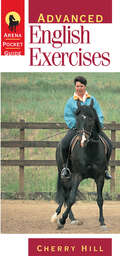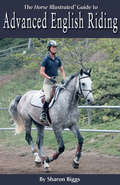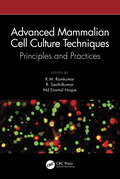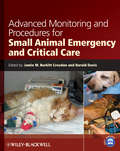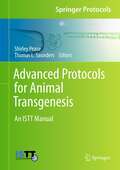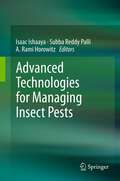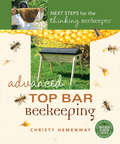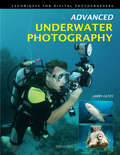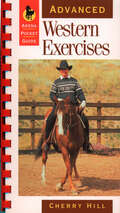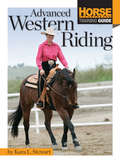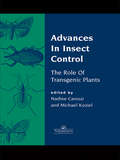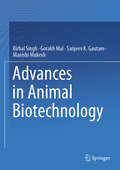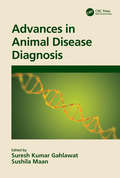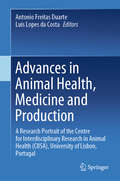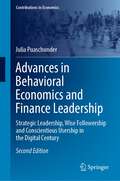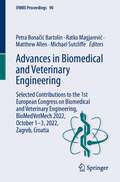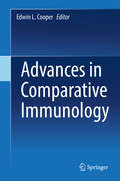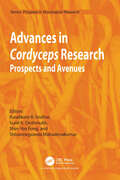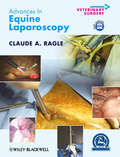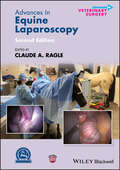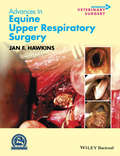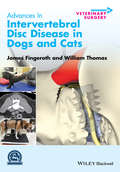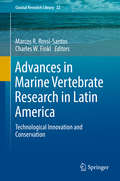- Table View
- List View
Advanced English Exercises (Arena Pocket Guides)
by Cherry HillWith this pocket-sized guide in hand, you'll find it easy to develop and perfect your English riding skills. Cherry Hill's exercises will help you hone lateral work, master collection, perfect lead changes, and fine-tune transitions and change of direction.
Advanced English Riding
by Sharon BiggsAn advanced rider, whether professional horseman, Olympic athlete, or just a horse lover who has learned the fundamentals and go on to ride his or her own horse, in the author's view, "is someone who graps the idea of good horsemanship and puts a great deal of time and effort into developing his or her seat and position." Advanced English Riding is designed to helped riders develop those skills and to help them move on to the next level of riding. Author Sharon Biggs, whose credits also include The Original Horse Bible, shares her considerable experience in English riding in this Horse Illustrated Guide that goes beyond the fundamentals to refine the riding skills of hunter/jumper riders and dressage riders, from improving seat and position to advanced schooling techniques and participating successfully and joyfully in competitions. This book offers step-by-step instructions and great advice for all English riders looking to develop, improve, or refine their skills in the various aspects of this popular riding discipline. This extensive guide is divided into 15 chapters and covers the following topics: honing the seat and position, the half halt, riding within the gaits (transitions, stride adjustment, collection, extensions, etc.), riding figures, lateral work, cavalletti and group poles (for hunters, jumpers, and dressage), gridwork (incorporating placing poles and cavalletti), cross-country jumping, hunter courses, show jumping courses, advanced competition in dressage, eventing, hunters, and show jumping, and more
Advanced Mammalian Cell Culture Techniques: Principles and Practices
by Md Enamul Hoque R. Senthilkumar K. M. RamkumarThis up-to-date book compiles both basic and advanced laboratory techniques of mammalian cell culture. It is divided into four major sections encompassing the basics of cell culture, nucleic acid and protein isolation, cell-staining techniques, and cell transfection and single-cell analysis. The topics include aseptic handling, media preparation, and passaging of cells. The book also outlines downstream assays such as nucleic acid and protein isolation from in-vitro cell cultures. Key Features: • Covers cellular staining using fluorescent dyes, genetic manipulation of cells via transfection, and an introduction to single-cell analyses • Discusses basics in cell culture and downstream applications including gene and protein expression analysis • Includes the principles underlying each of the techniques and provides a detailed methodology to practice • Explores the whole range of techniques – from basic to downstream applications and advanced methods The book is essential for students and researchers in the field of life sciences, biotechnology, genetics, and molecular biology.
Advanced Monitoring and Procedures for Small Animal Emergency and Critical Care
by Harold Davis Jamie M. Burkitt CreedonAdvanced Monitoring and Procedures for Small Animal Emergency and Critical Care is a comprehensive yet practical reference, providing hands-on information essential to veterinarians and veterinary technicians involved in emergency and critical care. Written by an expert team of veterinarians and veterinary technicians, this well-referenced book offers step-by-step protocols for performing advanced emergency and critical care procedures and monitoring techniques. Packed with practical guidance in an easy-to-use format, this book is ideally suited for quick access in emergency rooms or intensive care units. Organized primarily by body system, each chapter covers general principles, indications, equipment, techniques, basic interpretation, troubleshooting, and contraindications. Standardized protocols supply equipment lists and step-by-step instructions throughout, and a companion website offers images from the book in PowerPoint and protocols as downloadable Word files. Advanced Monitoring and Procedures for Small Animal Emergency and Critical Care is a valuable resource for any veterinary staff member with an interest in improving the standard of care in emergency and critical care medicine.
Advanced Monitoring and Procedures for Small Animal Emergency and Critical Care
by Harold Davis Jamie M. Burkitt CreedonAdvanced Monitoring and Procedures for Small Animal Emergency and Critical Care Detailed, standardized, step-by-step protocols for easy access to essential information in small animal emergency rooms and intensive care units Advanced Monitoring and Procedures for Small Animal Emergency and Critical Care, Second Edition offers a complete and clinically oriented reference for step-by-step detail on a wide range of procedures in the small animal emergency room and intensive care unit. Each protocol provides detailed instructions grounded in the evidence. The book is carefully designed for ease of use, with concise but comprehensive explanations, useful equipment lists, protocols called out in boxes, and extensive reference lists. In the revised and expanded Second Edition, information has been updated and expanded throughout, and information and chapters have been added in many important areas, including veterinary point-of-care ultrasound (VPOCUS), veterinary CPR, blood banking and transfusion medicine, advanced techniques for mechanical ventilation, and veterinary health care team wellbeing. A companion website offers the protocols in Word for editing and use in practice and the figures from the book in PowerPoint. Specific topics covered in Advanced Monitoring and Procedures for Small Animal Emergency and Critical Care include: The cardiovascular system, covering catheterization of the venous compartment, arterial puncture and catheterization, cardiac VPOCUS, principles of electrocardiography, and electrocardiogram interpretation The respiratory system, covering oxygen therapy, pulse oximetry and CO-oximetry, blood gas analysis, pleural space and lung VPOCUS, tracheal intubation, and temporary tracheostomy The urinary and abdominal systems, covering urethral catheterization, abdominal VPOCUS, peritoneal dialysis, technical management of hemodialysis patients, and peritoneal evaluation Transfusion medicine, covering blood banking, blood typing, cross-matching, and administration of blood and other biological products Advanced Monitoring and Procedures for Small Animal Emergency and Critical Care presents invaluable and accessible information for emergency situations, making it a highly useful reference for veterinary practitioners, veterinary technicians and nurses, veterinary students, small animal emergency and critical care residents, small animal emergency and critical care specialists, and emergency and critical care veterinary technicians and nurse specialists.
Advanced Protocols for Animal Transgenesis: An ISTT Manual (Springer Protocols Handbooks)
by Shirley Pease and Thomas L. SaundersThis laboratory manual, published in cooperation with the International Society for Transgenic Technology (ISTT), provides almost all current methods that can be applied to the creation and analysis of genetically modified animals. The chapters have been contributed by leading scientists who are actively using the technology in their laboratories. Based on their first-hand experience the authors also provide helpful notes and troubleshooting sections. Topics range from standard techniques, such as pronuclear microinjection of DNA, to more sophisticated and modern methods, such as the derivation and establishment of embryonic stem (ES) cell lines, with defined inhibitors in cell culture medium. In addition, related topics with relevance to the field are addressed, including global web-based resources, legal issues, colony management, shipment of mice and embryos, and the three R’s: refinement, reduction and replacement.
Advanced Technologies for Managing Insect Pests
by Isaac Ishaaya A. Rami Horowitz Subba Reddy PalliAmong the highlights of this book is the use of novel insecticides acting on a specific site in an insect group and are compatible with natural enemies and the environment. One of such approaches is based on disrupting the activity of biochemical sites acting on transcription factors such as the Helix-Loop-Helix (bHLH) family, anti juvenile hormone (AJH) agents that target JH biosynthetic enzymes, G-protein coupled receptors (GPCR) and bursicon as a target for insect control. Another one is the biotechnology or the genetic approach such as gene silencing (RNA interference) and Bt-crops. Other sections of the book are devoted to the plant's natural products, optical manipulation and the use of nanotechnology for improving insect control methods.
Advanced Top Bar Beekeeping: Next Steps for the Thinking Beekeeper (Mother Earth News Books for Wiser Living)
by Christy HemenwayA guide for backyard beekeepers who have advanced into their second year with top bar hives.Bee populations are plummeting worldwide. Colony Collapse Disorder poses a serious threat to many plants that rely on bees for pollination, including a significant proportion of our food crops. Top bar hives are based on the concept of understanding and working with bees’ natural systems, enabling top bar beekeepers to produce honey and natural wax while helping bees thrive now and in the years ahead.Advanced Top Bar Beekeeping picks up where The Thinking Beekeeper left off, providing a wealth of information for backyard beekeepers ready to take the next step with this economical, bee-friendly approach. Author Christy Hemenway shares:Guidance and techniques for the second season and beyondAn in-depth analysis of the dangers climate change and conventional agriculture present to pollinatorsAn inspiring vision of restoring bee populations through organic farming and natural, chemical-free beekeeping.While continuing to emphasize the intimate connection between our food system, bees, and the wellbeing of the planet, Advanced Top Bar Beekeeping breaks new ground in the quest to shift the dominant agricultural paradigm away from chemical-laden, industrial beekeeping monoculture and towards healthy, diverse local farming. See what all the buzz is about with this must-read guide for the new breed of thinking beekeeper.Praise for Advanced Top Bar Beekeeping“Christy's experience and drive to further the use of top bar hives is extremely evident in this her next level work. Her first book got you into a hive . . . . I learned a few tricks from her and my top bar beekeeping improved due to her insights and explanations. But what about next year? That's where this work picks up. It gets you through winter, spring, swarms, feeding, splits, harvesting honey and then settles into the very best thing I can say about this form of keeping bees. Clean wax.” —Kim Flottum, editor, Bee Culture magazine, and editor, BEEKeeping: Your First Three Years“[Christy’s] new book is not only essential for those who want to keep bees in top bar hives, but also for those want a deeper look on beekeeping problems and on the life of Apis mellifera.” —Paolo Fontana, entomologist / apidologist“Here are your next steps to keeping bees in top bar hives. Thoughtful, experienced, articulate advice.” —Michael Bush, BushFarms.com
Advanced Underwater Photography
by Larry GatesDesigned for photographers who already have strong diving skills and understand basic photographic techniques, this reference defines what advanced underwater photography is while teaching the skills necessary to create professional-quality images. Opening with a quick overview of the basics--such as exposure, focus, subject selection, and composition--the author then expands on each of these topics, showing the techniques pros use to achieve truly stunning images. A major factor in advancing beyond the basic level of underwater photography is moving from a point-and-shoot or semi-adjustable camera to using a full-featured digital SLR camera. The myriad equipment choices available when making this transition--including cameras, lenses, underwater housings, and the lighting units designed to be used with them--are explained, as are their respective advantages and shortcomings. Because both beginning and advanced underwater photographers can have equipment-related issues, a trouble-shooting section is included to ensure that minor equipment problems won't ruin a costly dive trip.
Advanced Western Exercises
by Cherry HillStrengthen your Western riding skills as you progress through a series of proven and effective exercises. Perfect for quick reference in the ring, this guide includes illustrated directions, an arena guide, and plenty of patterns to master. Focusing on essential riding fundamentals like lateral work, master collection, lead changes, and transitions, Cherry Hill offers plenty of encouraging expert advice for riders seeking to improve their horsemanship. Enjoy the rewarding satisfaction that comes with taking your riding to a new and exciting level.
Advanced Western Riding
by Kara L StewartNewly updated and extended, Advanced Western Riding joins the experience and enthusiasm of equestrienne Kara L. Stewart with the wisdom of Horse Illustrated to bring this definitive guide to advanced western riders. The book goes beyond the fundamentals to teach readers how to refine their riding skills--from the right mental attitude to the proper seat and hands to advanced schooling techniques and competitions. Complete with step-by-step instructions, countless tips, full-color photos, and an easy-to-use glossary, this guide takes the guesswork out of advanced western riding.
Advances In Insect Control: The Role Of Transgenic Plants
by Nadine Carozzi Michael KozielThe field of plant genetic engineering has arisen from the laboratory and into the market place as a technology to provide farmers and consumers with improved crops. 1996 marks a turning point as the first genetically engineered crops to control agronomically important pests are registered for commercial sale. In most cases it has taken over a deca
Advances in Animal Biotechnology
by Birbal Singh Gorakh Mal Sanjeev K. Gautam Manishi MukeshThis book entitled, “Advances in Animal Biotechnology,” is a compilation of state-of-the-art in the field of Animal Biotechnology including fishery, that are not sheltered in depth in earlier publications. It offers an update on avant-garde technologies and advances in key aspects of genetic engineering, metagenomics, assisted reproduction, animal genomics, biotechnology in veterinary health, as well as the role of gut and marine microbial ecosystems in livestock and industrial development. The book is divided broadly into five different sections, viz., Gut Microbiome and Nutritional Biotechnology, Assisted Reproduction Biotechnology, Livestock Genomics, Health Biotechnology, and Animal Biotechnology in Global Perspective. The book covers the syllabi of Animal Biotechnology courses in various universities, academia and competitive examinations at various levels. Researchers, Continuing Graduates, and Academicians, Research Institutions, and Biotech Companies will be benefited from this valuable compilation of research. Its broad spectrum makes this work a valuable resource for professionals, researchers, academics and students in the field of veterinary and animal production as well as the biotechnology industry.
Advances in Animal Disease Diagnosis
by Suresh Kumar GahlawatAdvances in Animal Disease Diagnosis: Infectious animal diseases caused by pathogenic microorganisms such as bacteria, fungi, and viruses threaten the health and well-being of wildlife, livestock and human populations, limit productivity and significantly increase economic losses to each sector. Pathogen de-tection is an important step for the diagnosis and successful treatment of animal diseases as well as control management in farm and field conditions. The conventional techniques employed to diagnose pathogens in livestock species are time-consuming and sometimes give inconclusive results. On the contrary, molecular techniques have the potential to diag-nose known pathogens/conditions quickly, reliably, and unequivocally as well as for novel pathogen detection. New advances in diagnostics and vaccine design using genomics have developed powerful new methods that have also set the stage for the enhanced diagnosis, surveillance, and control of infectious diseases. High-throughput sequencing (HTS), for ex-ample, uses the latest DNA sequencing platforms in the detection, identification, and detailed analysis of both pathogen and host genomes. This book will explore some key opportunities in the context of animal health, such as the detection of new microorganisms and the development of improved diagnosis of emerging or re-emerging diseases and other clinical conditions, viz. biosensors, nanotools, and omics technologies. Features • Details comprehensive knowledge on the latest molecular techniques for animal disease diagnosis and management• Examines how DNA-based diagnostic techniques will assist international efforts to control the introduction of exotic diseases into new geographic areas• Describes the latest molecular assays for the rapid and accurate detection of pathogens• Helps in working towards meeting the global challenge for sustainable food production and the eradication of poverty• With new biotechnological developments, this fully updated book is a treasure trove of the latest information in animal and medical science
Advances in Animal Health, Medicine and Production: A Research Portrait of the Centre for Interdisciplinary Research in Animal Health (CIISA), University of Lisbon, Portugal
by Antonio Freitas Duarte Luís Lopes da CostaThis book brings together in a review manner a comprehensive summary of high-quality research contributions from the different research teams and their collaborators, to celebrate the 25th anniversary of the Centre for Interdisciplinary Research in Animal Health (CIISA). The topics span from animal behaviour and welfare over biotechnology to clinical veterinary medicine. Thus, the book is of interest for researchers and students working in the diverse fields of veterinary medicine and science.The Centre for Interdisciplinary Research in Animal Health (CIISA), the Research Centre of the Faculty of Veterinary Medicine of the University of Lisbon, commemorated its 25th-year jubilee in 2018. Throughout its history, CIISA has been consolidating as the top-ranking Portuguese Animal and Veterinary Sciences research unit.More recently, CIISA has taken a leading role in the coordination of national and international research networks and consortiums. This conveyed a highly interdisciplinary nature to CIISA’s research, encompassing animal, veterinary and biomedical sciences. This multi- and interdisciplinary nature is reflected on the broad scientific background of the team.
Advances in Behavioral Economics and Finance Leadership: Strategic Leadership, Wise Followership and Conscientious Usership in the Digital Century (Contributions to Economics)
by Julia PuaschunderThis book explores human decision-making heuristics. The monograph studies how nudging and winking can help citizens to make rational choices and governments to create choice architectures that aid in stabilizing markets and flourishing society. By applying the behavioral economics approach to political outcomes, it demonstrates how economics can be employed for personal benefits but also foster the greater societal good. A review of the current literature on human decision-making advantages and failures in Europe and North America opens the book. A wide range of nudges and winks is presented that aid to curb the harmful consequences of human decision-making fallibility. Awareness of mental heuristics and biases in the finance domain is strengthened in order to understand how to nudge people to benefit from economic markets but also help governments to stabilize economies in providing strategic market communication. The author also proposes concrete leadership and followership directives on nudging in the digital age. This book appeals to scholars and policy makers interested in rational decision-making. The behavioral perspective features the strategic use of nudging and winking in the digital age.The second revised and expanded edition offers the newest insights on behavioral e-Economics and the latest developments regarding the COVID-19 pandemic. It covers topics such as the role of social media in finance and discrimination in searchplace competition. It also offers new insights on strategic leadership and smart followership directives to successfully navigate through complex and fast-paced e-architectures.
Advances in Biomedical and Veterinary Engineering: Selected Contributions to the 1st European Congress on Biomedical and Veterinary Engineering, BioMedVetMech 2022, October 1–3, 2022, Zagreb, Croatia (IFMBE Proceedings #90)
by Matthew Allen Ratko Magjarević Petra Bonačić Bartolin Michael SutcliffeThis book gathers selected peer-reviewed contributions to the 1st European Congress on Biomedical and Veterinary Engineering, BioMedVetMech 2022, held on October 1–3, 2022, in Zagreb, Croatia. It offers a timely snapshot of research findings and advances technologies in the area of biomechanics, rehabilitation and surgery. It covers applications of brain-computer interface, virtual reality and functional electrical stimulation, among others.
Advances in Comparative Immunology
by Edwin L. CooperImmunologists, perhaps understandably, most often concentrate on the human immune system, an anthropocentric focus that has resulted in a dearth of information about the immune function of all other species within the animal kingdom. However, knowledge of animal immune function could help not only to better understand human immunology, but perhaps more importantly, it could help to treat and avoid the blights that affect animals, which consequently affect humans. Take for example the mass death of honeybees in recent years – their demise, resulting in much less pollination, poses a serious threat to numerous crops, and thus the food supply. There is a similar disappearance of frogs internationally, signaling ecological problems, among them fungal infections. This book aims to fill this void by describing and discussing what is known about non-human immunology. It covers various major animal phyla, its chapters organized in a progression from the simplest unicellular organisms to the most complex vertebrates, mammals. Chapters are written by experts, covering the latest findings and new research being conducted about each phylum. Edwin L. Cooper is a Distinguished Professor in the Laboratory of Comparative Immunology, Department of Neurobiology at UCLA’s David Geffen School of Medicine.
Advances in Cordyceps Research: Prospects and Avenues (Progress in Mycological Research)
by Sunil K. Deshmukh Kandikere R. Sridhar Shin-Yee Fung Shivannegowda MahadevakumarThe genus Cordyceps and allied species, such as entomopathogenic fungi, mainly parasitize insects and other arthropods and have been known since ancient times. They are a source of hundreds of metabolites of medicinal significance used in drug discovery and drug development.The book reviews the developments in cordyceps research and its applications. It covers areas such as diversity, distribution, taxonomy, phylogeny, genetics, bioactive potential, nutraceutical values, biotechnological prospects, plant protection, safety concerns, and marketed products. Further, the impact of human interference as well as climate change on the habitats of Cordyceps has been discussed. The book is meant for readers with an interest in mycology and allied areas. It is also invaluable to personnel carrying out research in disciplines like applied biology, biochemistry, biotechnology, botany, ecology, entomology, environmental biology, field biology, forestry, and zoology.
Advances in Equine Laparoscopy
by Claude A. RaglePart of the Advances in Veterinary Surgery series copublished with the ACVS Foundation and Wiley-Blackwell, Advances in Equine Laparoscopy presents a state-of-the-art reference on laparoscopic skills and procedures in the horse. Chapters are written by the leading experts in the field, and each section includes a practical review of the published literature. Encompassing instrumentation, basic principles, and specific techniques, Advances in Equine Laparoscopy offers an up-to-date, reliable resource for comprehensive information about equine laparoscopy.This current, well-referenced text begins with a section on the fundamentals of laparoscopy, then moves into sections on the clinical application of laparoscopic techniques in the standing or recumbent horse. A companion website offers eight video clips demonstrating selected procedures at www.wiley.com/go/ragle. Advances in Equine Laparoscopy is an invaluable guide for equine surgical specialists and equine clinicians interested in laparoscopic techniques.
Advances in Equine Laparoscopy (AVS Advances in Veterinary Surgery)
by Claude A. RagleNew edition of the only detailed reference devoted to equine laparoscopy, now with new procedures and video clips The newly revised and updated Second Edition of Advances in Equine Laparoscopy is a state-of-the-art reference to all aspects of laparoscopy in equine patients. The book covers skills and instrumentation, standing surgeries, and recumbent surgeries, with new sections describing evaluation of the small intestine, closure of the epiploic foramen, thoracoscopic repair of diaphragmatic hernia, uterine tear repair, ovariohysterectomy, and large granulosa cell tumors. A new companion website features video clips demonstrating the procedures discussed. Each chapter in the new edition has been updated with relevant references produced during the intervening decade. The Second Edition adds 10 new chapters covering techniques and applications developed in the last decade, along with the addition of a section on two-stage procedures. With chapters written by leading experts, Advances in Equine Laparoscopy discusses: The foundations of laparoscopy, fundamental laparoscopic skills, suturing and knot-tying techniques, fundamentals of energy sources, and reusable and disposable equipment Sedation and analgesia in the standing horse, diagnostic techniques, and evaluation of horses with signs of acute and chronic abdominal pain Evaluation of the small intestine, closure of the nephrosplenic space, adhesiolysis, and mesenteric rent repair Peritoneal flap hernioplasty technique for preventing the recurrence of acquired strangulating inguinal herniation in the stallion and inguinal hernioplasty using cyanoacrylate Advances in Equine Laparoscopy is an essential resource for equine surgeons, surgery residents, and interns, especially those interested in minimally invasive surgery and those who are studying for board certification in surgery.
Advances in Equine Upper Respiratory Surgery
by Jan HawkinsAdvances in Equine Upper Respiratory Surgery is a comprehensive, up-to-date reference on surgical techniques in the upper respiratory tract in the horse, presenting theory and background as well as detailed procedures information. Part of the Advances in Veterinary Surgery series copublished with the ACVS Foundation, the book covers the most common upper respiratory diseases, with in-depth information on laryngeal hemiplegia and dorsal displacement of the soft palate. Providing a complete resource, the book reflects the current state of the art, offering a significant update on disorders of the nasal septum, nasal passage, paranasal sinuses, hard and soft palate, epiglottis, arytenoids, guttural pouch, and trachea in the horse.The book includes 200 images illustrating key points of each surgical procedure. Potential complications and expectation management are discussed alongside the technique information. Advances in Equine Upper Respiratory Surgery is a useful reference for those in clinical practice and surgical residents.
Advances in Intervertebral Disc Disease in Dogs and Cats
by James Fingeroth William ThomasAdvances in Intervertebral Disc Disease in Dogs and Cats defines our present knowledge of this common clinical problem, compiling information related to the canine and feline intervertebral disc into a single resource. As a comprehensive, focused work, the book is an authoritative reference for understanding and treating disc disease, providing a sound scientific and clinical basis for decision making. Offering an objective synthesis of the current literature, the book supplies guidance on the approach to a potential disc rupture, surgical and medical strategies, and management of the patient.Offering a complete understanding of intervertebral disc disease, the book describes and discusses the controversies and issues surrounding this topic, acknowledging the gaps in our knowledge. Advances in Intervertebral Disc Disease in Dogs and Cats presents up-to-date, reliable information on this common condition for veterinary surgeons, neurologists, and general practitioners.
Advances in Marine Vertebrate Research in Latin America: Technological Innovation and Conservation (Coastal Research Library #22)
by Charles W. Finkl Marcos R. Rossi-SantosThis book gathers the most recent research findings on ecology and conservation of marine vertebrates in Latin America, making use of high technological methods to show readers the diversity of the marine research that has been conducted in these countries over the last decades. The book brings authors from more than 23 institutions of 7 different countries developing the most diverse research aiming at ocean conservation through the ecology of different vertebrate animals, such as whales, dolphins, manatees, turtles, seabirds and fish. This book deals with technological advances and innovation in the ecology and conservation of marine vertebrates in Latin America. This eclectic collection is broad in scope but provides detailed summaries of new methods that are deployed in the study of marine environmental conservation. Key issues revolve around the development and application of educational methodologies in the field of marine vertebrate research, which provide a rational basis for better management of marine environments using modern techniques associated with GIS, satellite tracking, aerial systems, bioacoustics, biogeochemistry, genetics, underwater videography, species photoidentification, molecular biology, trophic ecological methods, ethological methods, and behavioural ecology, among others. Discussion and elucidation of these kinds of techniques are aimed at university-level students and post-graduate researchers. The scope of this volume includes whales, sharks, rays, dolphins, tropical fishes, turtles, manatees as well as aspects of Latin American marine ecosystem conservation. Researchers in this biogeographic region, as well as others involved with marine vertebrate research, will find this work essential reading.
Advances in Small Animal Total Joint Replacement
by Denis J. Marcellin-Little Jeffrey N. PeckAdvances in Small Animal Total Joint Replacement provides an up-to-date, comprehensive examination of joint replacement in veterinary surgery. Part of the Advances in Veterinary Surgery series copublished with the ACVS Foundation, the book presents an evidence-based, multi-system examination of the current state of hip, knee, and elbow replacement in dogs and cats, including information on biomechanics and biomaterials not found in other sources. Written by an international group of experts, the book offers guidance on the history, indications, contraindications, clinical procedures, and a review of the current literature for these surgical techniques.Focusing on replacement of the hip, knee, and elbow, the book also covers disc, shoulder, carpus, and tarsus replacement, as well as information on the development of custom prostheses. Each section incorporates information on potential complications and outcomes assessment. Advances in Small Animal Total Joint Replacement is an unparalleled repository of information for veterinary surgeons, residents, and practitioners with an interest in these procedures.
